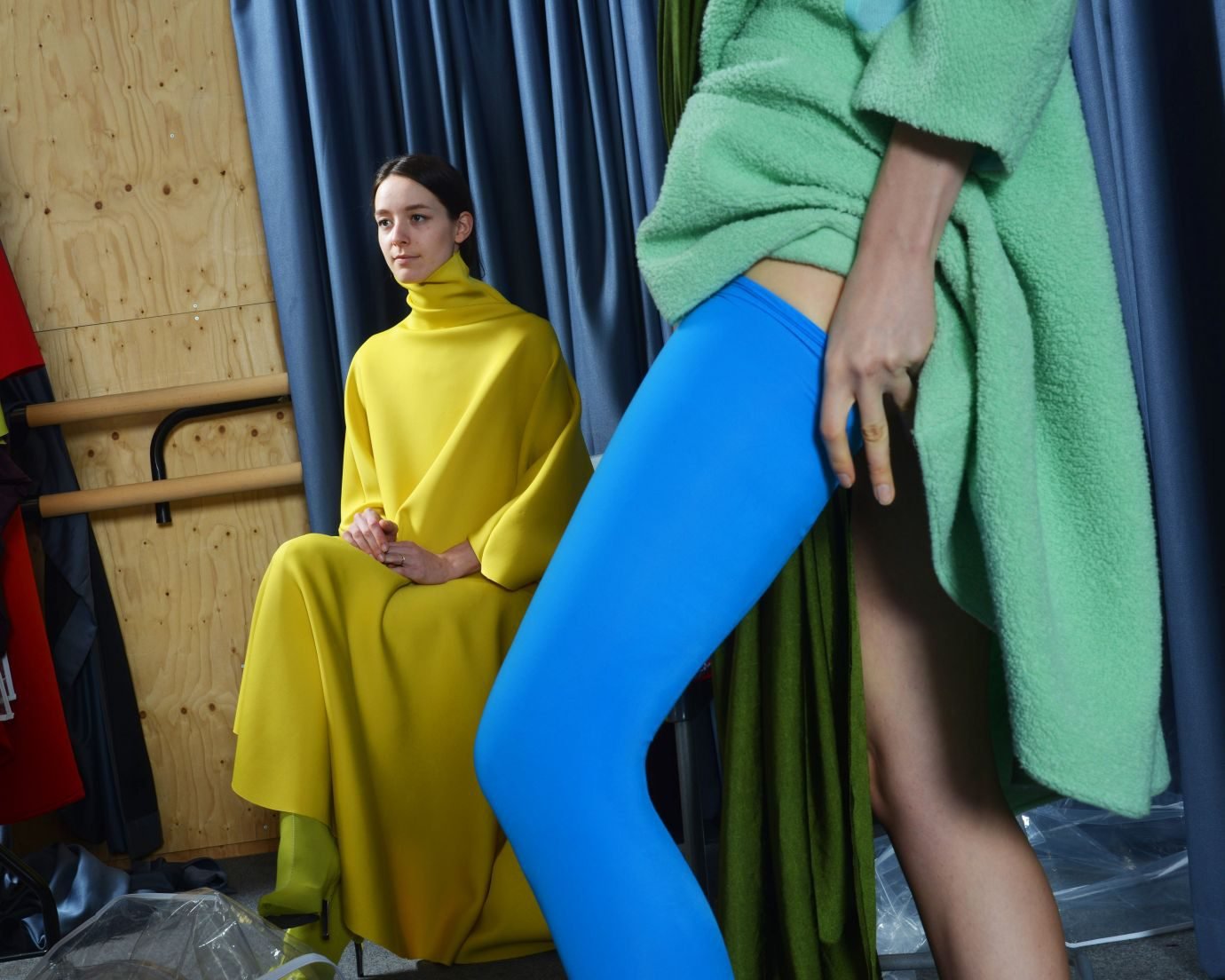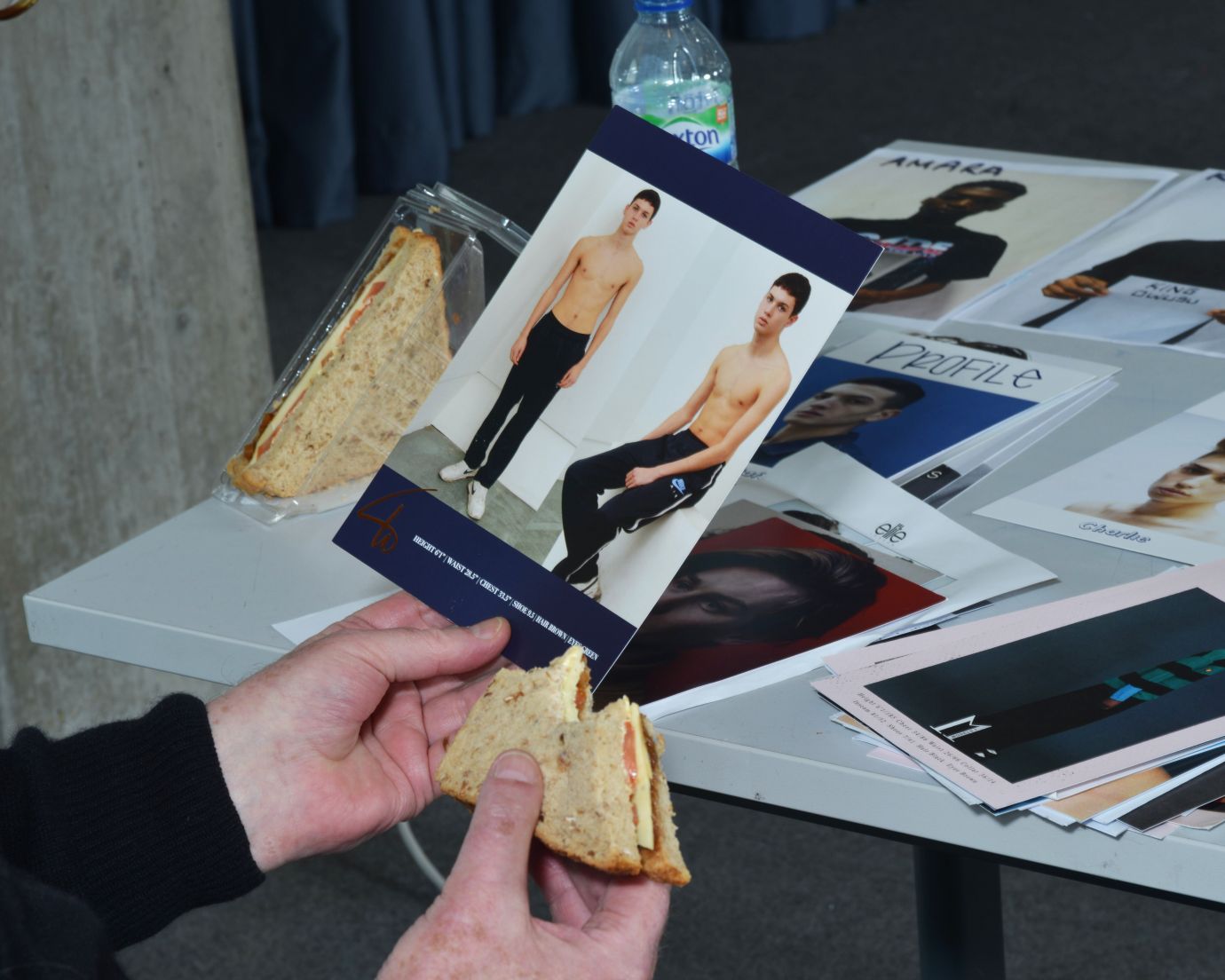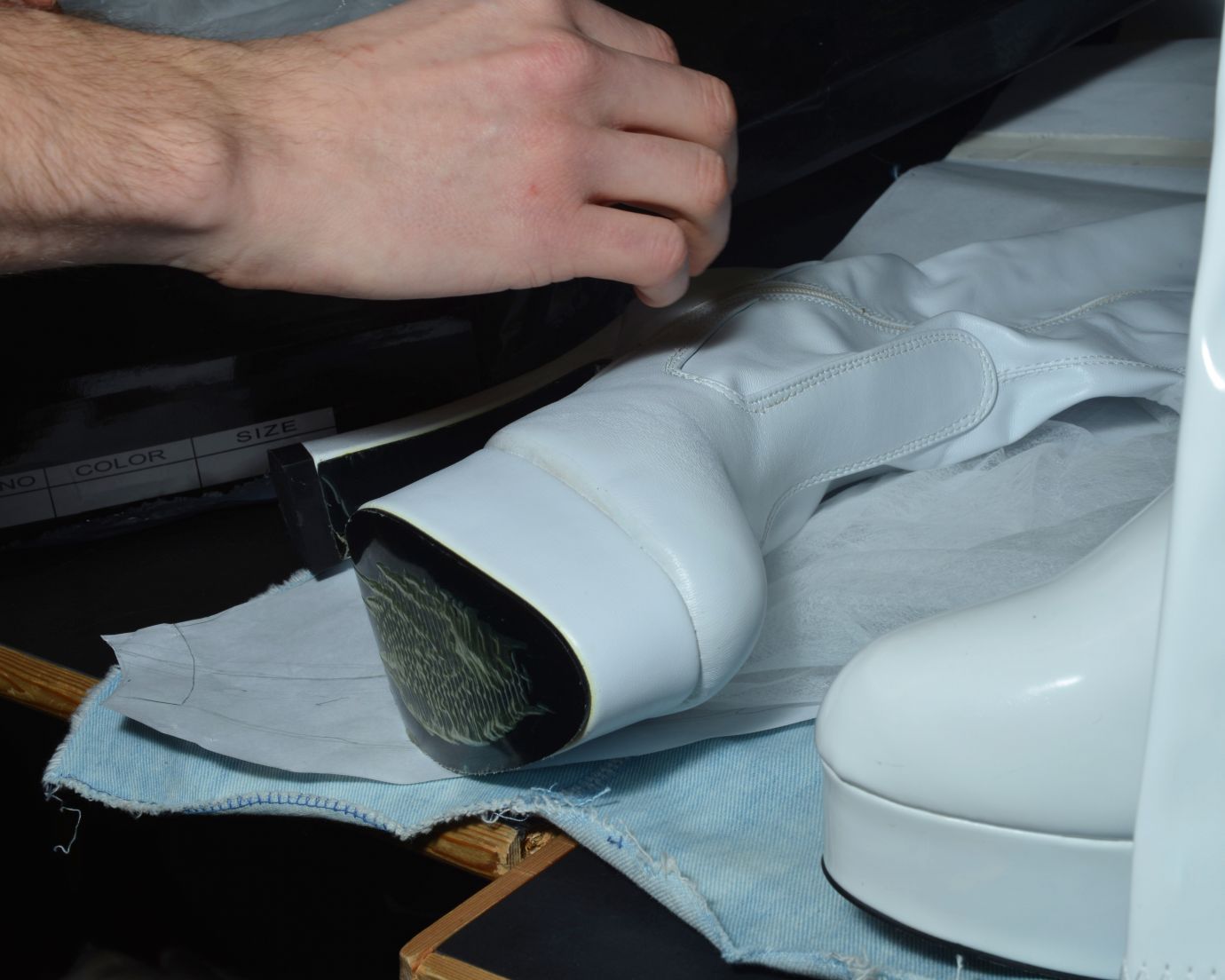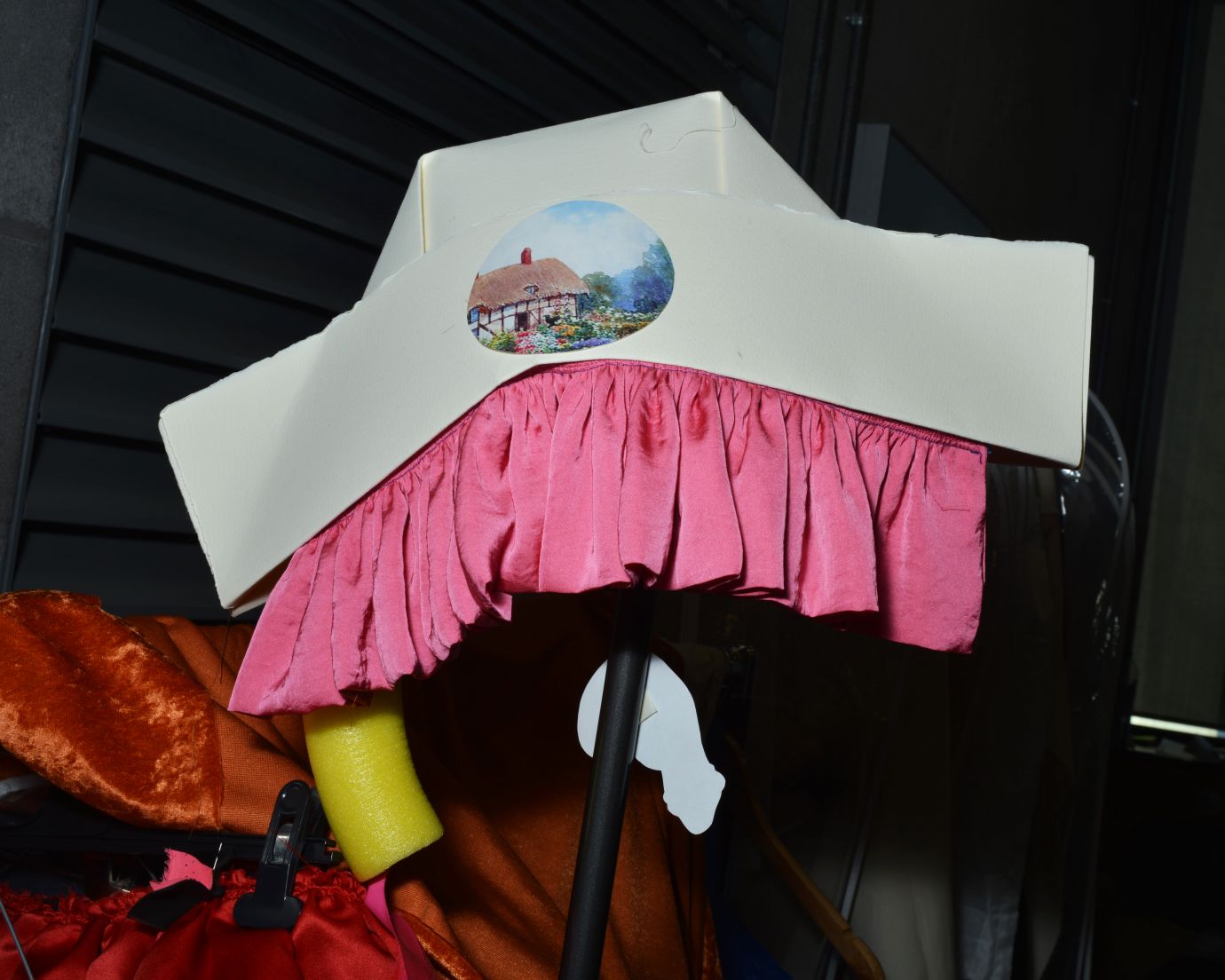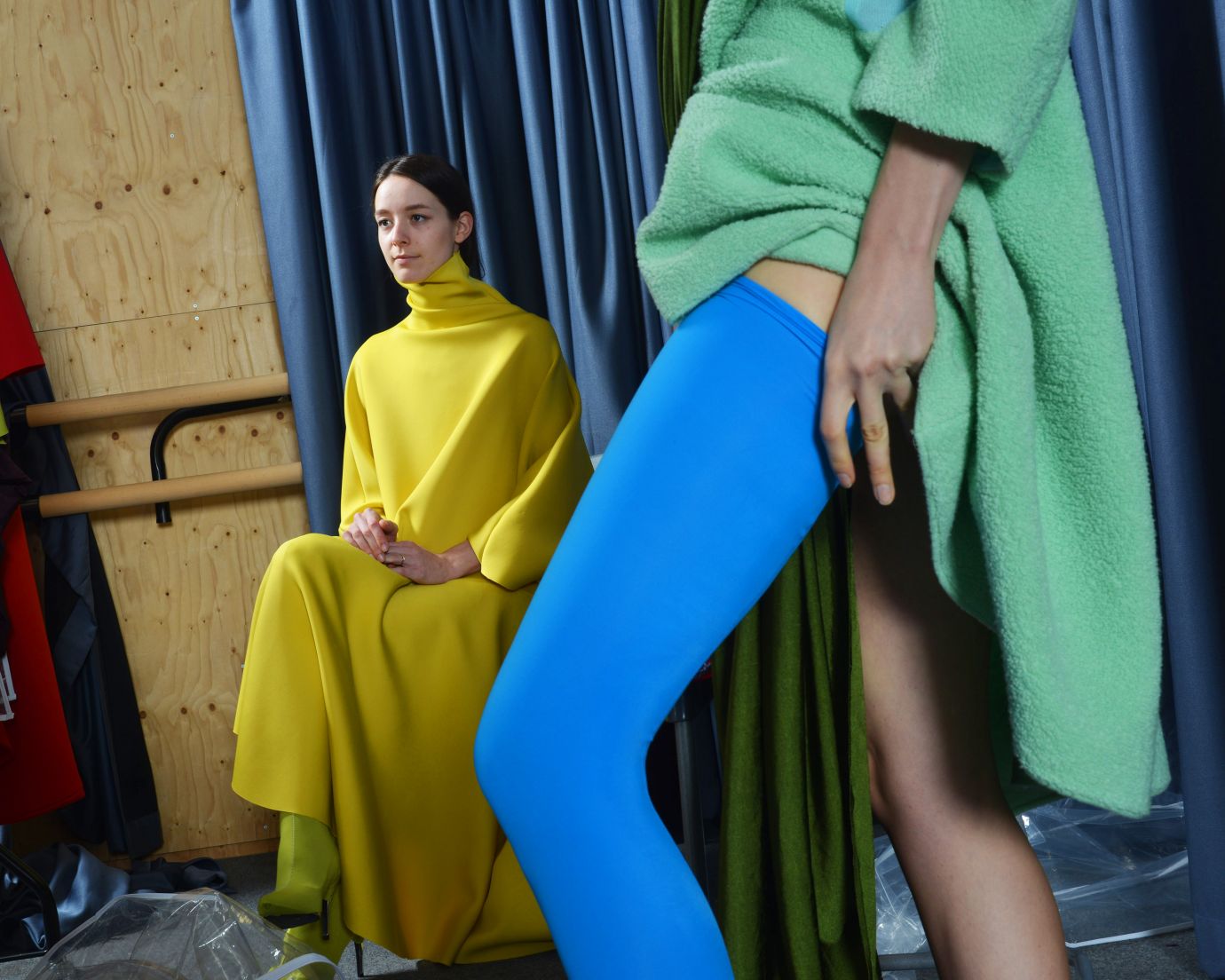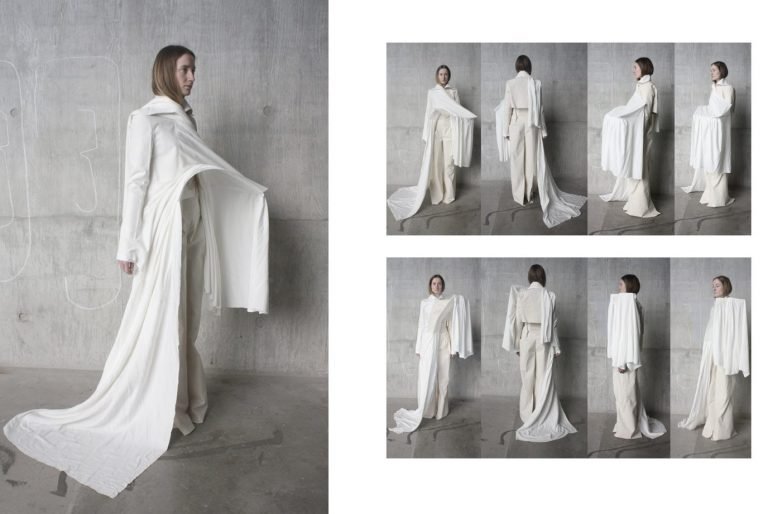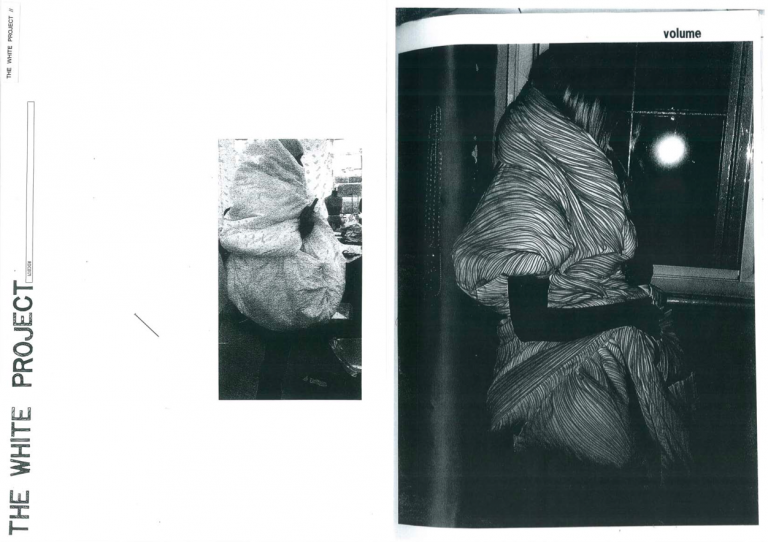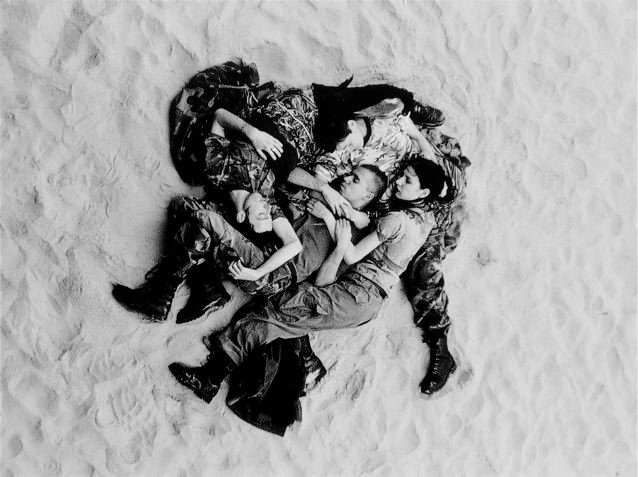What was your relationship to the observation?
I was doing a lot of rushing around. They were really busy, the students. One of the things that Alistair said is that they’re fine about it as long as you don’t stop them from working. The thought of stopping and talking to someone when they’re in a really busy last phase of their course didn’t seem right. Also, it’s not my subject, so I’d probably ask some ridiculous question. They were constantly being assessed and critiqued. It was another time when students are sensitive and nervous, I didn’t think it was quite right to talk to them too much.
Did you set out to learn anything in particular about them?
I run an MAF programme at UCA Farnham, so I was interested to see how similar the process was in a different subject area. What the characters were like within the course because it’s a very highflying course. I think I was also interested in how one might feel in a fashion environment because you think you might be intimated in someway, but actually it’s the complete opposite. It felt quite liberating because they all wear extraordinary garments. It’s really do what you want and I like that feeling. So that was a very nice feeling, I found it a very nice environment to be working in. I don’t know if I’d like to be one of the students because that seems really stressful but in terms of being part of the process, a bit outside of it, I found it a really great environment.
What did you enjoy most about your time spent there?
The way they let me in. I was like a paparazzi, with a Nikon just clicking and clicking. But that’s another thing I don’t normally do. I’m quite wary about how people feel with a camera in their face. I had about four to six lights in every room, even the tiniest of rooms and at least between one and two assistants, three at the fashion show – so really I think I was really impressed by the way we were let in. I could sense they were nervous on day one, I could sense the nervousness. Then I could sense the way they relaxed a couple of days later, there were a couple of technical staff that were like “don’t come near me with that camera!” but after a couple of days being there, any tension disappeared.
Was there anything interesting you saw that you didn’t expect?
Loads! The clothes – I’d never really seen anything like it because I’d never been to a fashion show, I’ve seen stuff in magazines and what have you, but I’d never been to one. Also the process behind it all. When I went in January I couldn’t actually believe they were going to make this set of costumes ready in two months time, it seemed impossible! The speed at which it was done, the meticulous craftsmanship of it all. From what I saw, the craft – I really didn’t expect to see people making their own stuff. God knows what I expected, I thought fashion people just designed things and other people make them but the fact they were making them. They had to achieve a high level of craftsmanship as well as coming up with the designs is quite extraordinary. Very demanding.

